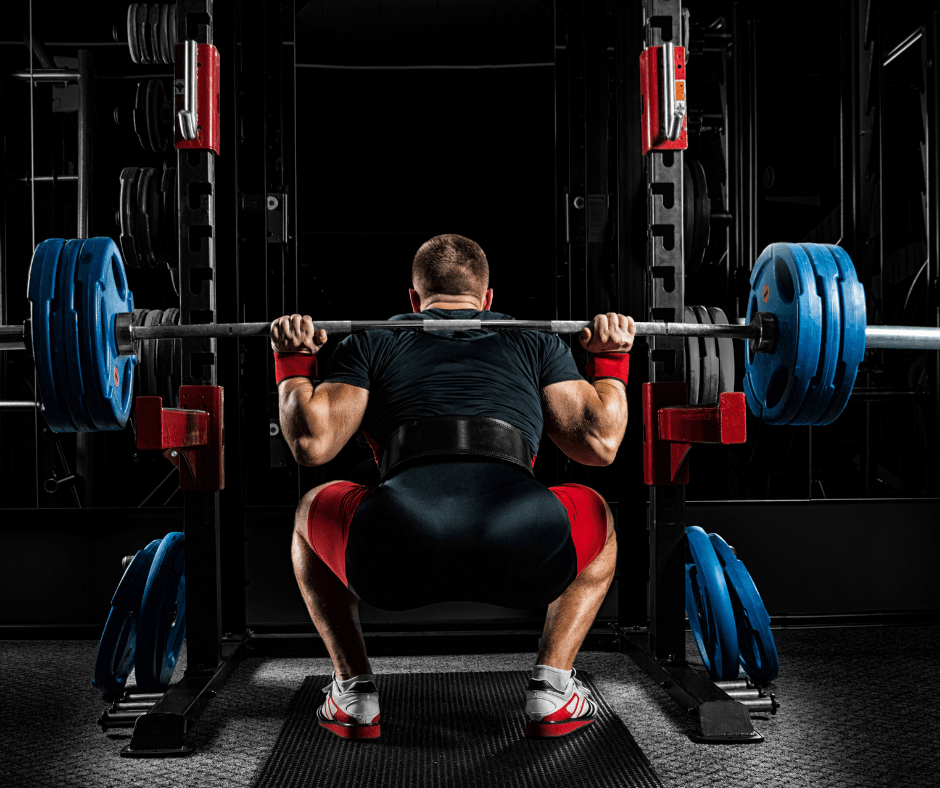I get asked this question all of the time. My answer is usually “Of course they’re bad for your knees…If you’re doing them incorrectly, or if you have poor joint stability/flexibility. But if you’ve got a healthy, functional body and are educated in squat mechanics the squat can be the absolute best exercise for your knees AND your entire body.” This article from Strengthsensei.com Illustrates where some of the squat myths originated from and describes the scientific benefits of a correct squat.

Does The Squat Destroy Your Knees?
Knee health is very frequently mentioned when discussing the squat. This is because there is a theory that says squatting will destroy your knees.
This tenacious myth is quite old, and comes in many variants. You can hear it said many different ways, and since it dates back to a time where science was only beginning to look into the field of training, people consider it a piece of wisdom that is unquestionable. Yet, modern science has debunked that myth through and through. There are many reasons the squat is a great exercise for the long-term health of your knees.
What is the origin of this myth? The theory comes from Karl Klein who did an experiment in 1951 with a device he invented on test subjects. The goal was to test ligament laxity in the knee joint. This experiment, which did not include squat as an exercise, prompted him to a very moderate recommendation against squat in his book, published a few years after. Just so you understand: he NEVER said that squat should not be done or that they were dangerous, even though it appears he was not a fan.
What compounded the situation was a growing trend of the ’60 and ‘70s. The aerobics movement was only just beginning at that time. To accommodate the growing craze, gyms started recruiting instructors and increasing the number of participants. The size of those aerobics’ classes made it difficult for instructors to give personalized instructions to participants who were often in poor physical condition. So it is in that context that the word got around that squats or lunges were “safer” when the knees did not go over the toes.
And voilà! Squat has been the bad guy that destroys your knees ever since the era of spandex, crazy hairdos, and group classes. A combination of partially distorted science and a fitness fad that turned it into Gospel is mostly responsible for the myth that “squats are bad for your knees.” Fortunately, modern science sheds a different light on squatting.
Before going on, it is important to make a distinction between two things: the squat itself and deep knee flexion with the feet flat on the floor where the knees travel over the toes. There might be valid reasons that prevent a given individual from squatting. Or from not starting a beginner trainee on the squat right away. But the topic of this article will be specifically full flexion of the knee.
What exactly is full knee flexion? Coach Poliquin was fond of saying that that the lower portion of your hamstrings should cover the upper portion of your calves. It seems science would tend to agree with this definition, for two reasons: the tension of the ligaments that hold the knee together and the activation of the muscles involved in the movement.
In order to understand the first reason, you need to know that four ligaments contribute to knee stability. The two cruciate ligaments, anterior and posterior, keep the knee from sliding forward or backward. The collateral ligaments, medial and lateral, make sure the knee is stable on the sides. Why this talk about slipping and sliding? Well, the knee is a very shallow joint. In fact, the tibial end is called the tibial plateau.
The tension of these four ligaments depends on the position of the knee. Can you guess where they are the most lax? In other words where the knee joint is the most susceptible to injury? If your answer is 90°, put a gold star in your notebook! The 90° position is exactly where the “gurus” recommend you stop the movement in order to avoid the knees going over the toes. Yet, this is also the position where the knee is the most unstable, from a ligament perspective.
The next thing you should know is that squatting is a complex movement. This means that many muscles will have to coordinate and synchronise together. The peak contraction of each muscle will not happen at the same moment during the range of motion. The gluteal muscles, for example, have their peak contraction (as measured by EMG) between 90° and 135° of knee flexion.
Why does this matter? Because the glutes are in charge of hip control and extension. Squatting “ass-to-grass” allows the glutes to maximally contract. This way, they can play their role without shifting stress to the hamstrings. The “control” portion at the hip is also important, since the femur is the top portion of the knee joint.
It’s also necessary to talk about the forces being applied to the knee while squatting. The major ones in play are compression force and shearing force. Some previous studies raised a concern about compression forces increasing below 90°. While this is true, it is not taking into consideration that the knee is remarkably well-built to support compression.
Shear forces, on the other hand, are highest at 90°. Shear is actually made up of the anterior/posterior sliding forces that were mentioned earlier. Shear forces do the knee no good, as it is not structurally built to resist them. 90° is an important point in the range of motion, since the tug-of-war between quadriceps and hamstrings is at its peak. Both muscles reach maximal contraction at this joint angle. This creates the above-mentioned peak in shear forces.
All of this means one thing. If you have to slow down a movement during the descent and reverse the motion, the 90° knee flexion angle is not a great place to do it. Ligament arrangement, force productions, and muscle activation all make going lower than 90° a better idea when doing deep knee flexion movements.
You want to save your knees? Go low!


